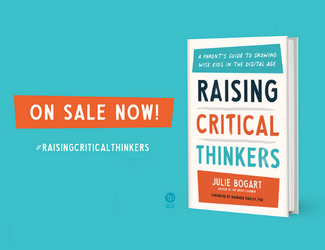Your Ideal Life

What would your ideal life with children be if you could live it without guilt or fear that you might fail; without worry that you are not meeting academic expectations?
My recipe looked a bit like this:
- Making homemade muffins
- Having a Poetry Teatime
- Going on outdoor adventures (swimming in summer, hiking in fall, planting flowers in spring, skiing in winter)
- Reading together from a great book like Julie of the Wolves
- Watching something good on TV or a movie
- Snuggling
- Messing with paint or clay or colored pencils
- Eating yummy foods (like Farmer’s Market fruit or a new recipe from a foreign country)
- Playing a board game all the way through
- Visiting another family
- Taking a trip to somewhere else (art museum, movie theater, nature center, YMCA…)
- Spending time with a homeschooling co-op
- Listening to Shakespeare
It’s always interesting to me that school subjects rarely make the list of things we’d love to do if we had the time, if we had no guilt, if we could “do what we want.” Yet math, writing, foreign language, history…these are all riveting when handled with passion, creativity, and relevance to the age and stage of the child. They can be just as wonderful as messing with paint and clay. In fact, messing with clay or going to a museum or spending time out of doors may be the most effective vehicles for teaching the three R’s and history!
The truth is…
We have these ideas of what makes life rich and then we have ideas of what our obligations are. We tend, most of us, to either follow a slavish routine of meeting obligations or slowly capitulate to the inertia of not following through on the routine, and yet we never quite make the alternative plan happen! The desired harmonious lifestyle of satisfying experiences combined with routine is a phantom image of someone else’s homeschool, but never ours.
I remember a homeschooling veteran saying to me once: “Any time your child wants to play a board game, do it. Don’t wait until later in the day, or for the next day, or for rain. Get the game out, clear the table with a sweep of your hand sending all those papers flying, and put out the Monopoly board and play! That’s why you are home: so you can play hours of Risk or Zooreka or Stratego!” Today, of course, the same could be said for Wii Golf or Mario Cart.
I took this advice to heart. The next thing you knew, I was learning how to play Yugi-oh cards, how to “open” as the white pieces in chess, how to be strategic in RISK. My kids started creating their own games. We have homemade versions of Clue, Seinfeld Trivia, “Stick the Take” (don’t ask —Caitrin’s game she designed at age 3—the only one she could reliably “win” in a house of older siblings), homemade Mancala, Pogs, brand new card games, 3 dimensional chess, and more.
Dice-rolling, calculating percents, determining rules and winners, articulating specific facts onto small cards in one’s own handwriting—now that’s education! That’s learning.
It all started with board games made by Parker Brothers. It continued with board games made by Bogart brothers and sisters.
What is your homeschool vision?
The fantasy homeschool that lives in your head is the vision created in your heart, by your instincts, and with your best intentions. It’s a good vision. It’s a right vision. You aren’t imagining plopping your kids in front of a television six hours a day so you can read romance novels and drink bourbon.
Your vision for your homeschool is whole. It’s:
- filled with learning and living,
- relational and peaceful,
- personality honoring and generously giving.
That’s a worthy life to lead!
It’s absolutely essential to value the whisperings of your inner homeschool muse. As I like to say, “Inspiration is not a lengthy visitor.” If you don’t trundle down the path behind her, she will leave you alone with your text books and end of the year exams.
Follow, see where she leads, trust the process and your aspirations. The fruit is so well worth it.
Just know that you can’t always see the fruit the same way workbook pages reassure you that “learning” is happening. When you spend hours talking, laughing, tickling, playing made up games, going on walks, listening to songs on the radio, skipping stones in a creek, competing in Dance Revolution, drawing pictures of pumpkins, walking the dog, calculating how much money to save each month for an American doll purchase, and eating 1/6 pieces of homemade quiche, you don’t always see the academic growth in the same month or year. The effects of this lifestyle are cumulative and compounding. But they are good effects!
What starts off as a trickle of enthusiasm, becomes a meaningful obsession by 24. But between 8 and 24, you will see undulations of enthusiasm and boredom, progress and stagnation.
That’s how it’s supposed to be!
Case in point. My daughter (when age 24) took inner city kids on a camping trip (she was a social worker). She was excited to introduce them to nature in a direct way. I said, “I love hearing about your enthusiasm for nature. Remember how you used to say you had no interest in the outdoors?”
Her reply: “Mom, I’m not 15 any more.”
Ha! Too true!
So do the things you know are good for all of you, trust these activities to teach and nourish your family, believe in the power of a well-rounded life. Then watch the unfolding of amazing lives—lives you’ve had the privilege to shape and love.
That’s the homeschool you believe in. So live it!



















